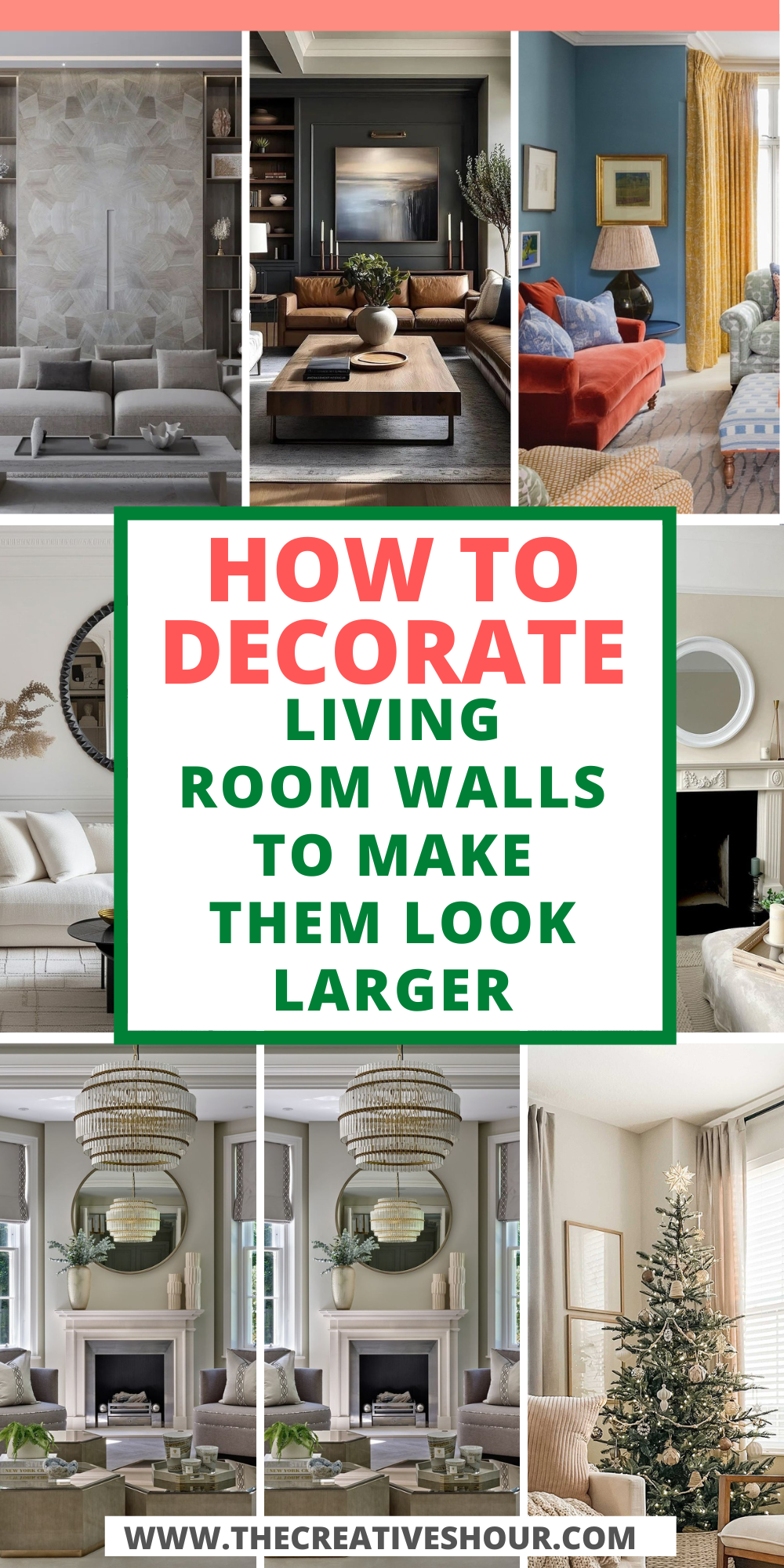
Making a small living room feel bigger can be tricky. You might look around and wonder how to create more space without knocking down walls or doing major renovations. But sometimes, it’s all about the decor choices, especially what you do with your walls.
I spoke with a few interior designers who shared some clever wall decor techniques that can make a small room feel much larger. Believe it or not, something as simple as hanging a mirror or using the right curtains can change the entire feel of your space. And the best part? These ideas are easy to try without needing a big budget.
Whether you’re dealing with a tiny apartment or just a small room in your home, these tips will help open things up and make the space more inviting. Ready to make your living room feel bigger and brighter? Let’s dive into these expert suggestions!
Expert Insights on Unique Wall Decor Techniques
Strategic Mirror Placement Expands Space
Mirrors have this magical way of making rooms feel twice as big as they are. I’ve experienced it firsthand—placing a mirror opposite a window can instantly make a space feel brighter, almost like you’ve opened up a secret room you didn’t know you had. It’s one of those quick wins when you’re trying to make a small living room feel more open without doing anything drastic.
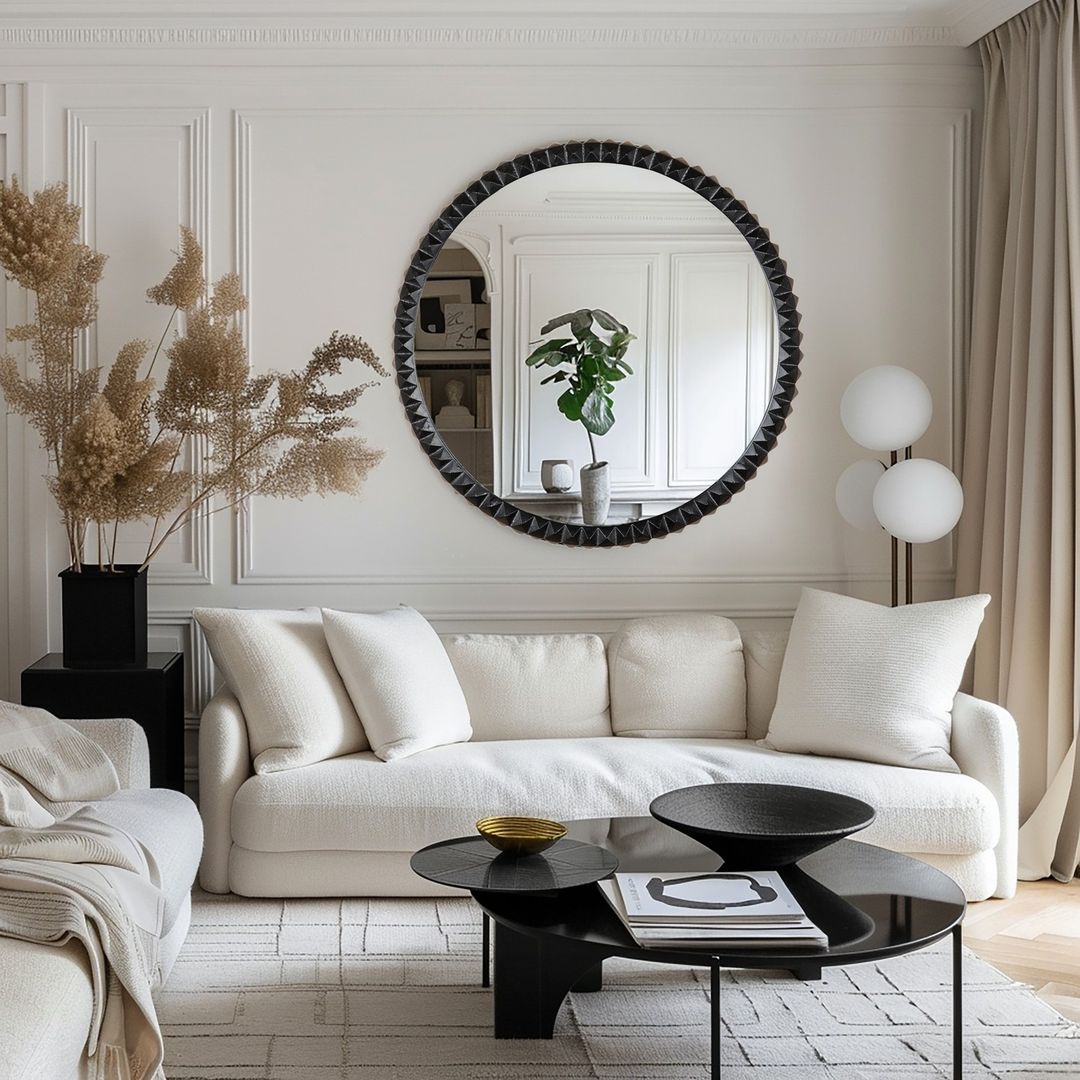
Image by greendecore
Interior designer Brad Smith, CEO of Omni Home Ideas, swears by this trick. In his words, “One transformative technique I often utilize in small living rooms is the strategic use of mirrors to create an illusion of depth and expand visual space. By placing a large mirror opposite a window, you not only reflect natural light, enhancing brightness and openness, but also double the visual depth of the room. This method not only makes the space appear larger but also brings dynamic changes throughout the day as the light changes.
For homeowners with limited wall space, consider installing mirrored wall panels or selecting decor with reflective surfaces to achieve a similar expansive effect. This approach not only maximizes your space but also elevates the overall aesthetic, making the room feel more open and inviting.” – Brad Smith, CEO & Interior Designer, Omni Home Ideas
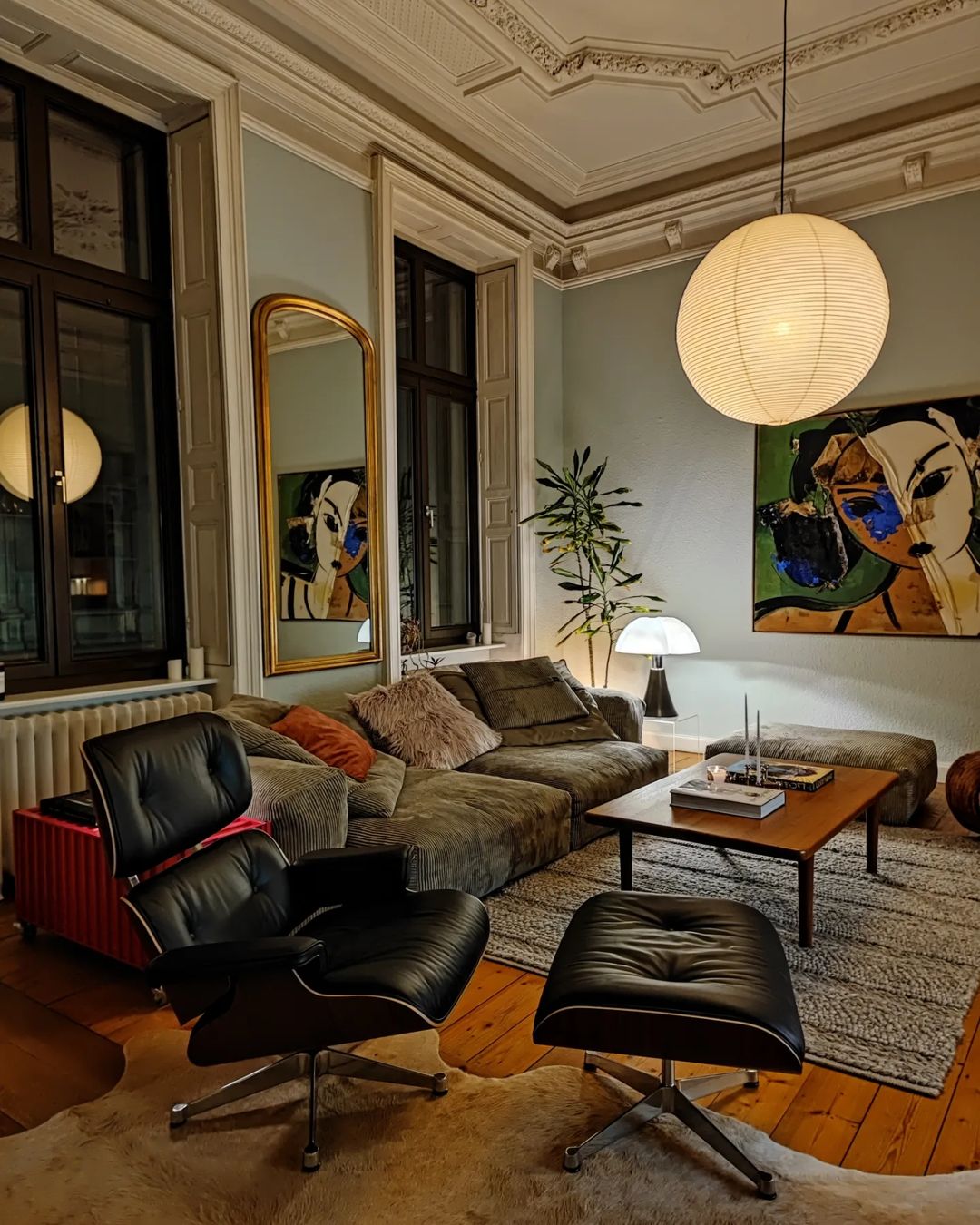
Image by dennisvonnazareth
His advice is pure gold for anyone with a tight space. Mirrors can do so much more than just hang on the wall. Whether you go for one large mirror or decide on mirrored wall panels, you’ll notice the whole room opens up. It’s kind of like when you wear a light-colored outfit and suddenly feel like you’ve added a few inches to your height. The same goes for mirrors—they stretch the space in a way that’s both subtle and impactful.
Mirrors really are the unsung heroes of small spaces. Not only do they make your living room feel bigger, but they can add a touch of elegance and brightness—no renovation needed.
Statement Mirror as Functional Centerpiece
Mirrors can completely change how a small living room feels. I once used a big mirror in a tight space, and it instantly made the room feel bigger and brighter. It didn’t just reflect light—it became the main attraction of the room without making things feel crowded.
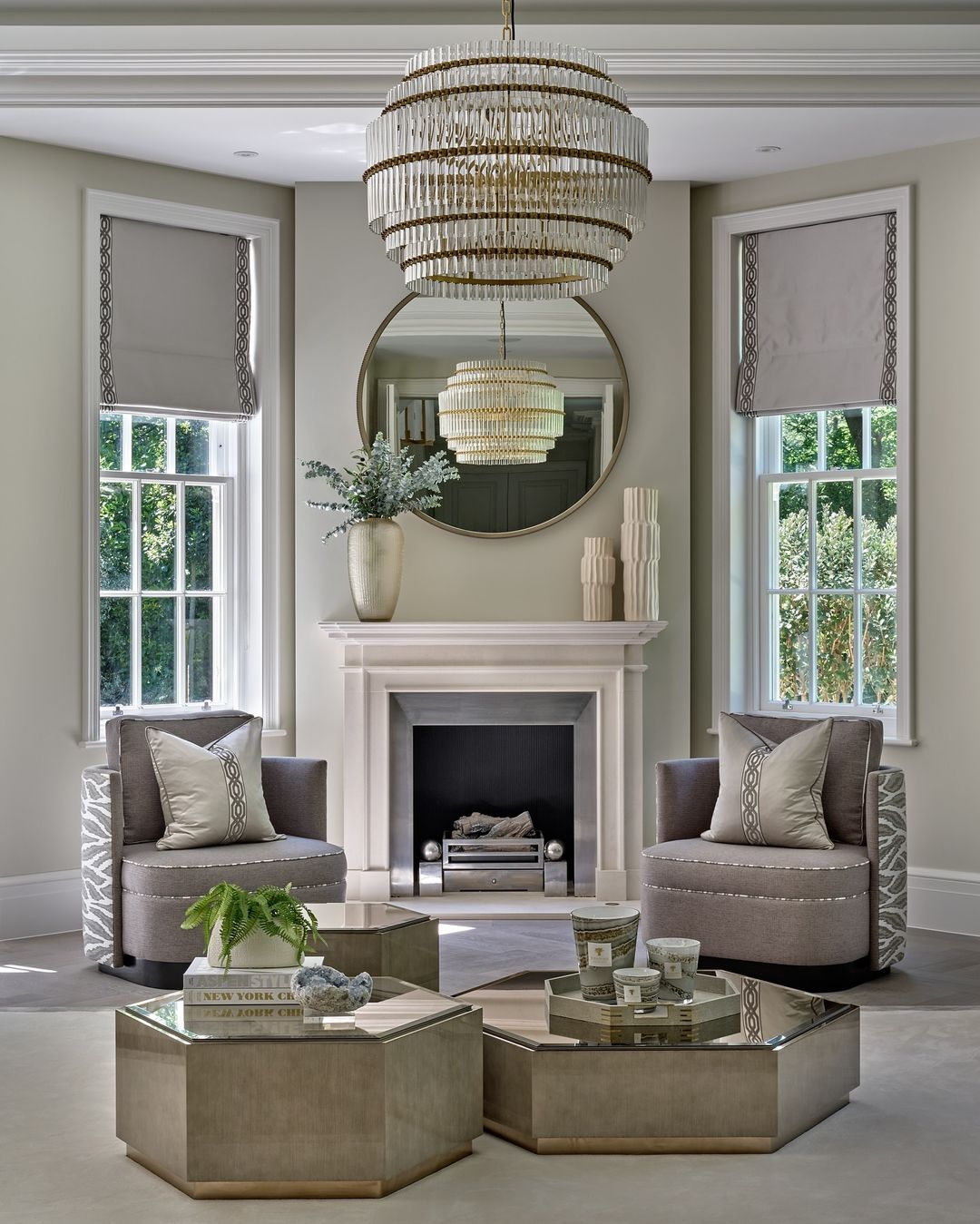
Image by hillhouseinteriors
JD Lloyd, from Bella Virtual Staging, had a similar experience. He says, “I recently used a large, sleek mirror on a narrow living room wall, and it completely changed the feel of the space. Mirrors are fantastic for bouncing light around the room, which gives the illusion of depth and openness. In this case, the room felt instantly brighter and more spacious. What’s great about a statement mirror is that it not only serves a practical purpose, but it also acts as a centerpiece, drawing attention without overwhelming the room.
For homeowners with limited wall space, my advice would be to focus on multifunctional décor. Try to find pieces that both enhance the room visually and serve a functional purpose. Whether it’s a mirror, floating shelves, or artwork with a light frame, make sure it contributes to the room’s sense of flow rather than crowding it. Less can truly be more in a small space. “ – JD Lloyd, Business Development Manager and Project Manager, Bella Virtual Staging
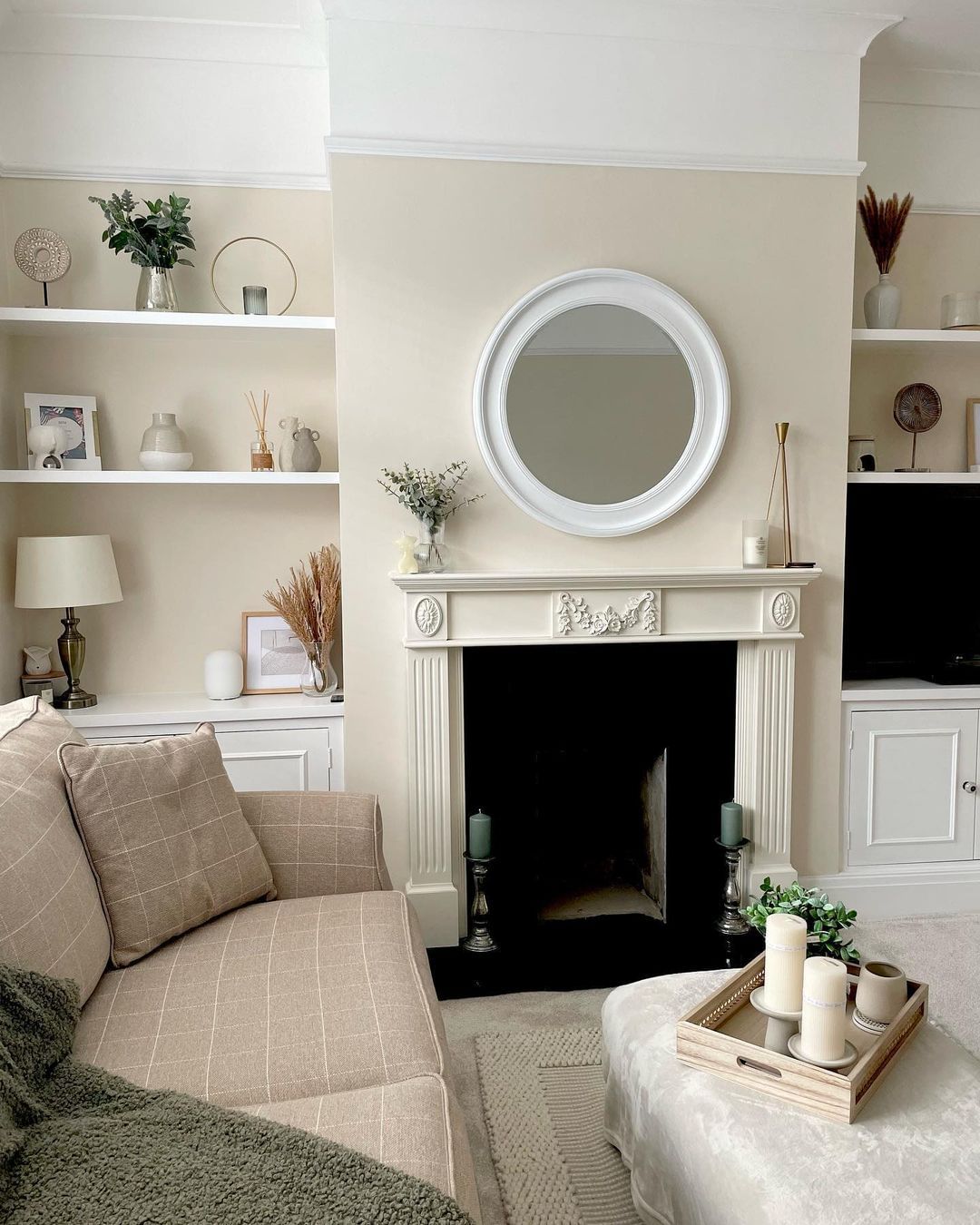
Image by melody_maison
With an oversized mirror, you don’t have to choose between style and space. It can brighten the room, make it feel more open, and serve as the perfect centerpiece. It’s a simple but powerful tool for any small living room.
Floor-to-Ceiling Curtains Enhance Height
A simple way to make a small living room feel bigger is by hanging floor-to-ceiling curtains. This trick pulls the eye upward, making the room seem taller and more open. It’s an easy change, but it can have a huge impact.
Charles Chakkalo, owner of Joey’z Shopping, explains: “ We’ve found that using floor-to-ceiling curtains can work wonders in creating the illusion of a larger living space. It’s a simple trick, but the impact is truly transformative.
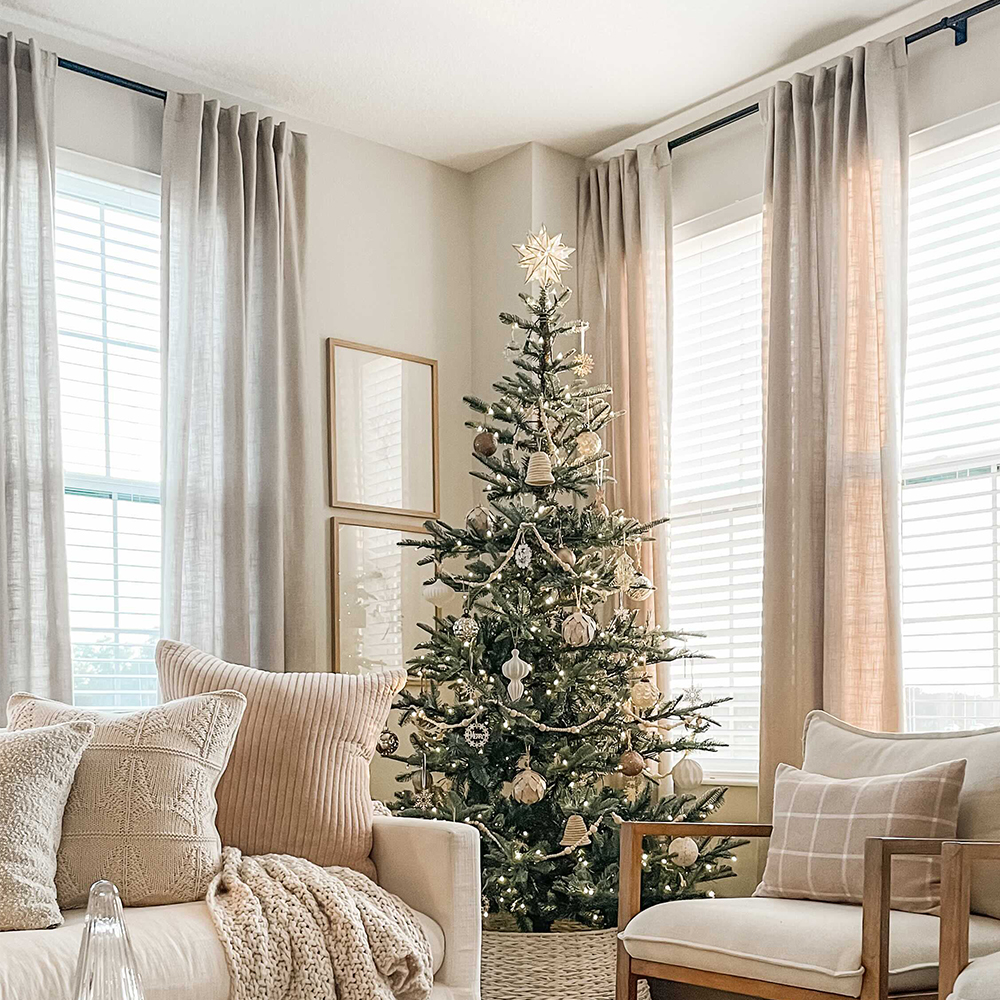
Image by curtarra_curtains
By extending the curtains beyond the window frame and all the way to the ceiling, you draw the eye upwards, creating a sense of height and openness. Opting for light, airy fabrics in neutral or pastel hues further amplifies this effect, allowing natural light to filter in while maintaining a sense of flow and serenity.
In one project, we transformed a cramped living room into a bright and airy haven with this simple technique. The floor-to-ceiling curtains instantly made the room feel taller and more spacious, and the soft, natural light created a warm and inviting atmosphere.
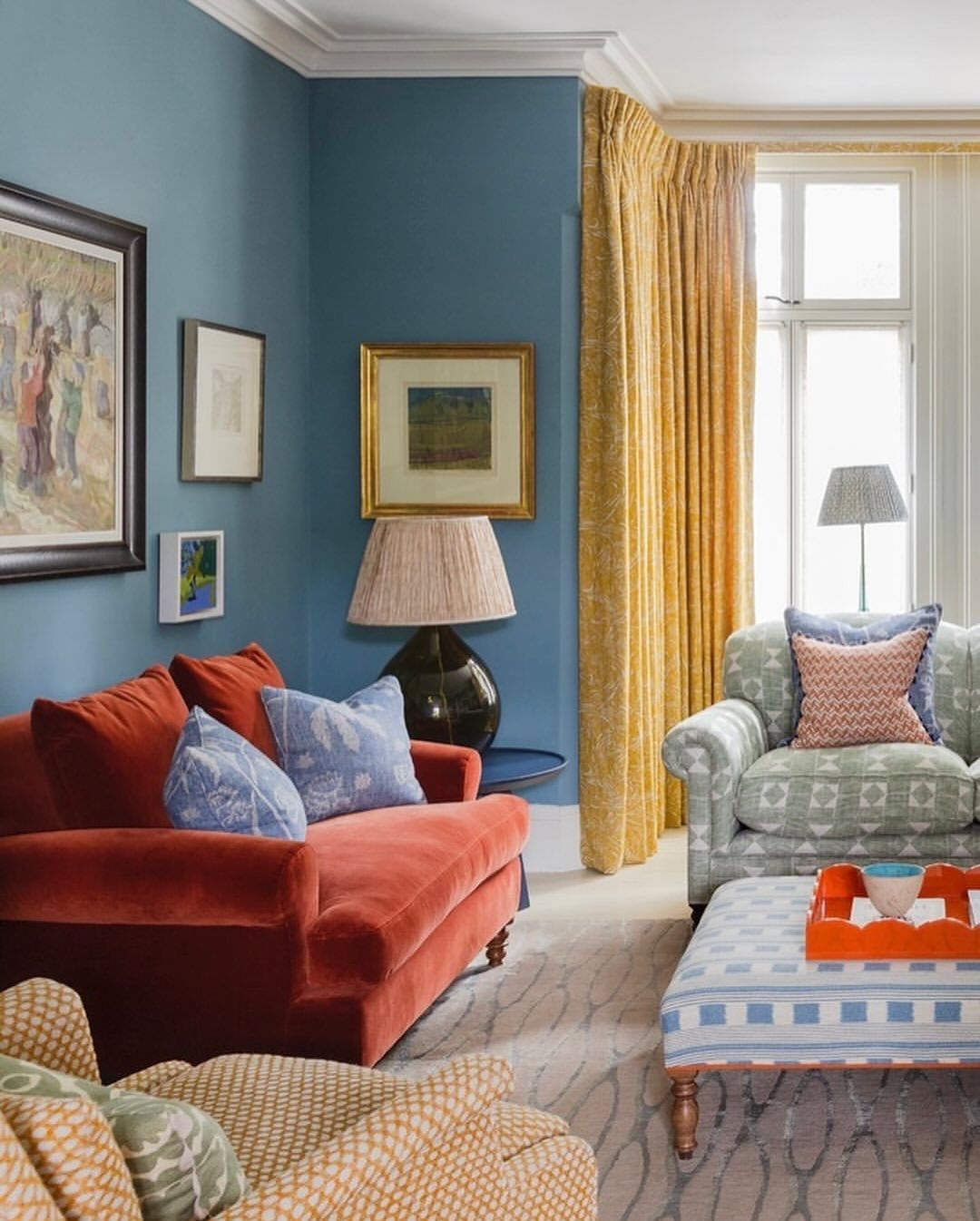
Image by kls.interiors
For those grappling with limited wall space, this strategy is a lifesaver. It adds drama and visual interest without cluttering up precious wall real estate.
Here are a few pro tips to get you started:
- Choose fabrics that complement your existing decor and color palette.
- Hang the curtain rod a few inches above the window frame to create the illusion of even greater height.
- Opt for a simple, streamlined design that doesn’t overwhelm the space.
Remember, sometimes the most impactful design choices are the simplest. By strategically utilizing window treatments, you can create a space that feels both inviting and expansive, even if you’re working with a smaller footprint.” – Charles Chakkalo, Owner, Joey’z Shopping
This small change can make a big difference, instantly adding height and openness to your living room.
Leather Wall Tiles Reflect Light, Add Luxury
Leather wall tiles are a unique way to bring both luxury and a sense of space to a small living room. Their sleek, smooth surface reflects light, which can make the room feel more open while adding a touch of sophistication. It’s a design choice that not only enhances the room’s aesthetic but also helps visually expand the space.
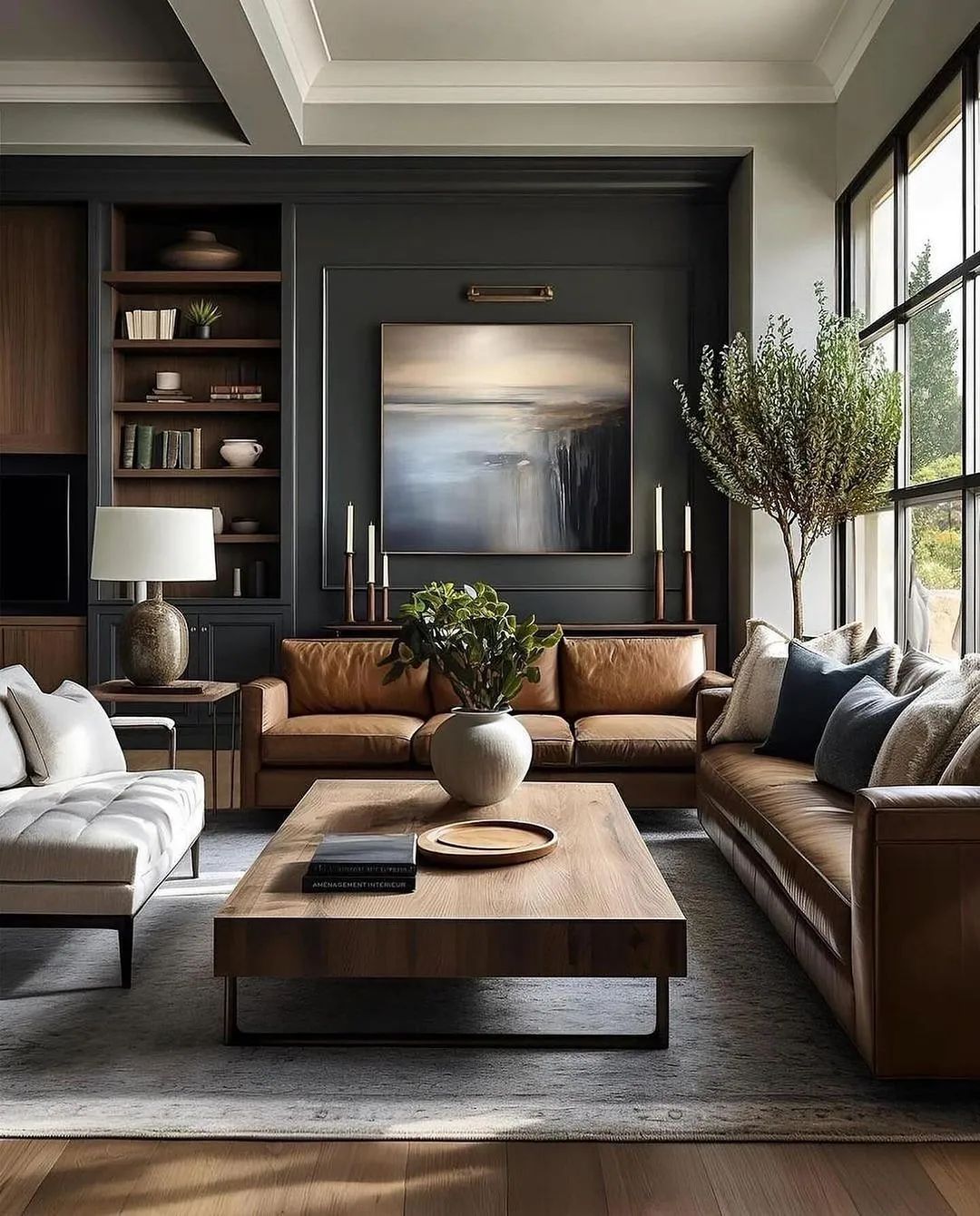
Image by thefarmhouseinterior
Marios Pitsillidis, CEO of Limassolian Leathers Ltd, shares how these tiles can transform a room: “One unique wall decor technique that I’ve used to visually enlarge a small living room is the installation of sleek, minimalist leather wall tiles. These tiles create a smooth, continuous surface with a subtle sheen that not only adds a sense of luxury but also reflects light, helping to make the room feel more open and spacious. Since our leather wall tiles have a uniform texture, they create a cohesive, uninterrupted look that avoids visual clutter—an essential factor in making a small space feel larger.
The impact on the room’s aesthetic was significant. The leather tiles introduced an upscale, sophisticated feel without overwhelming the space, and the simplicity of the design ensured that the walls didn’t compete with the room’s furniture or decor. Instead, the leather tiles served as a refined backdrop, adding warmth and richness without the need for complex textures or patterns that can make a small space feel busier.
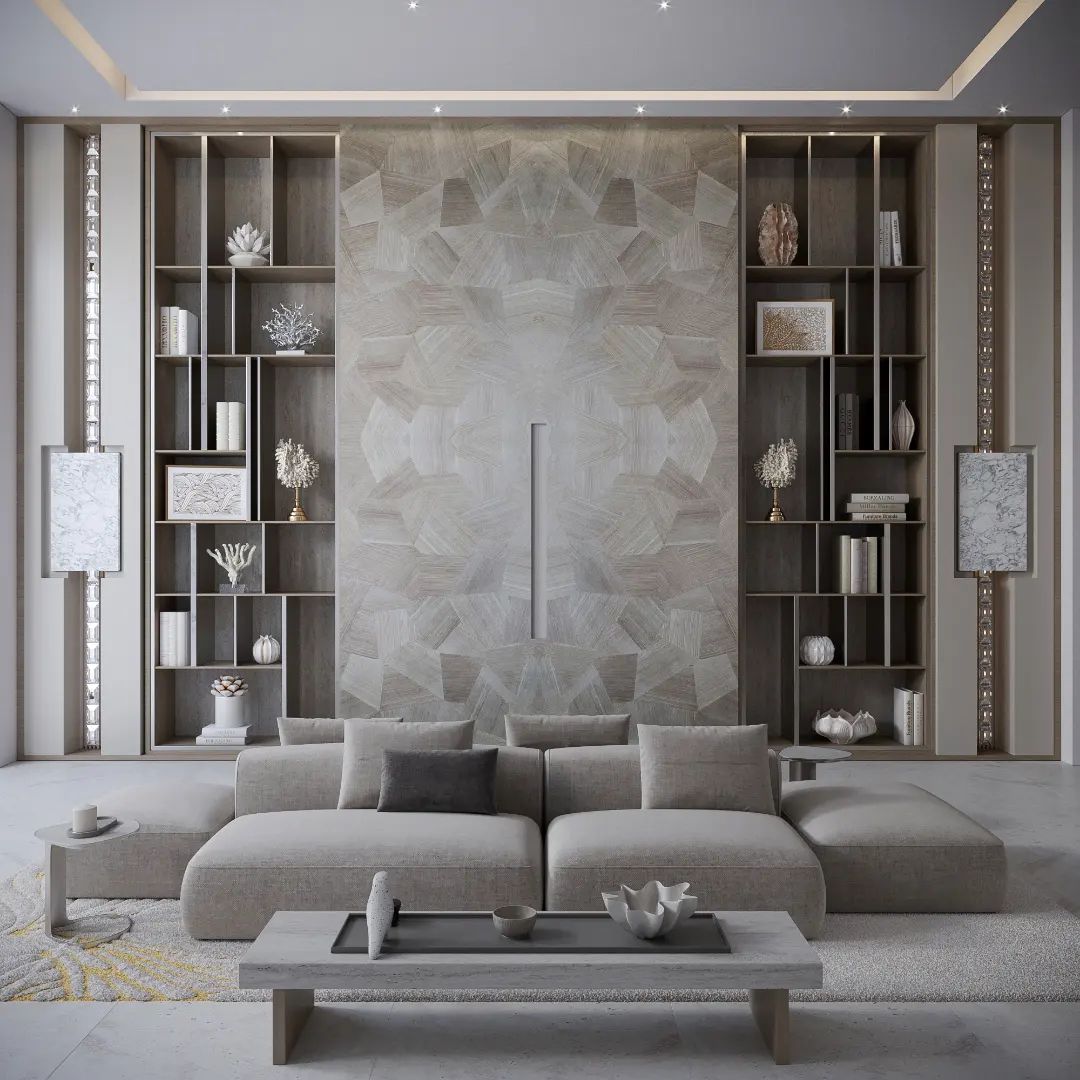
Image by nasr__alsayed
For homeowners with limited wall space, I recommend considering smooth, continuous materials like our leather tiles. These tiles don’t demand visual attention but instead enhance the overall ambiance, creating a more expansive feel. Opt for light or neutral colors to further amplify the effect of openness, and pair the tiles with strategic lighting to maximize the room’s spaciousness. With minimal upkeep required, leather wall tiles offer both style and practicality for small living spaces.” – Marios Pitsillidis, CEO, Limassolian Leathers Ltd
For anyone looking to bring both elegance and spaciousness to their living room, leather wall tiles are a stylish and practical solution.
Conclusion
Incorporating the right wall decor techniques can truly transform a small living room into a space that feels more open and inviting. From the strategic use of mirrors to reflect light and create depth, to floor-to-ceiling curtains that draw the eye upward, these simple changes can make a big impact.
Leather wall tiles add luxury while helping reflect light, and a statement mirror can serve both a practical and decorative purpose, doubling as a centerpiece that enhances the room’s overall feel.
These expert tips show that with a little creativity, even the smallest living room can feel spacious and stylish. Whether you’re working with a tiny apartment or just a cozy nook, these unique decor ideas can help you make the most of your space. So why not give them a try and see how they can transform your own living room? Sometimes, the smallest changes lead to the biggest results!
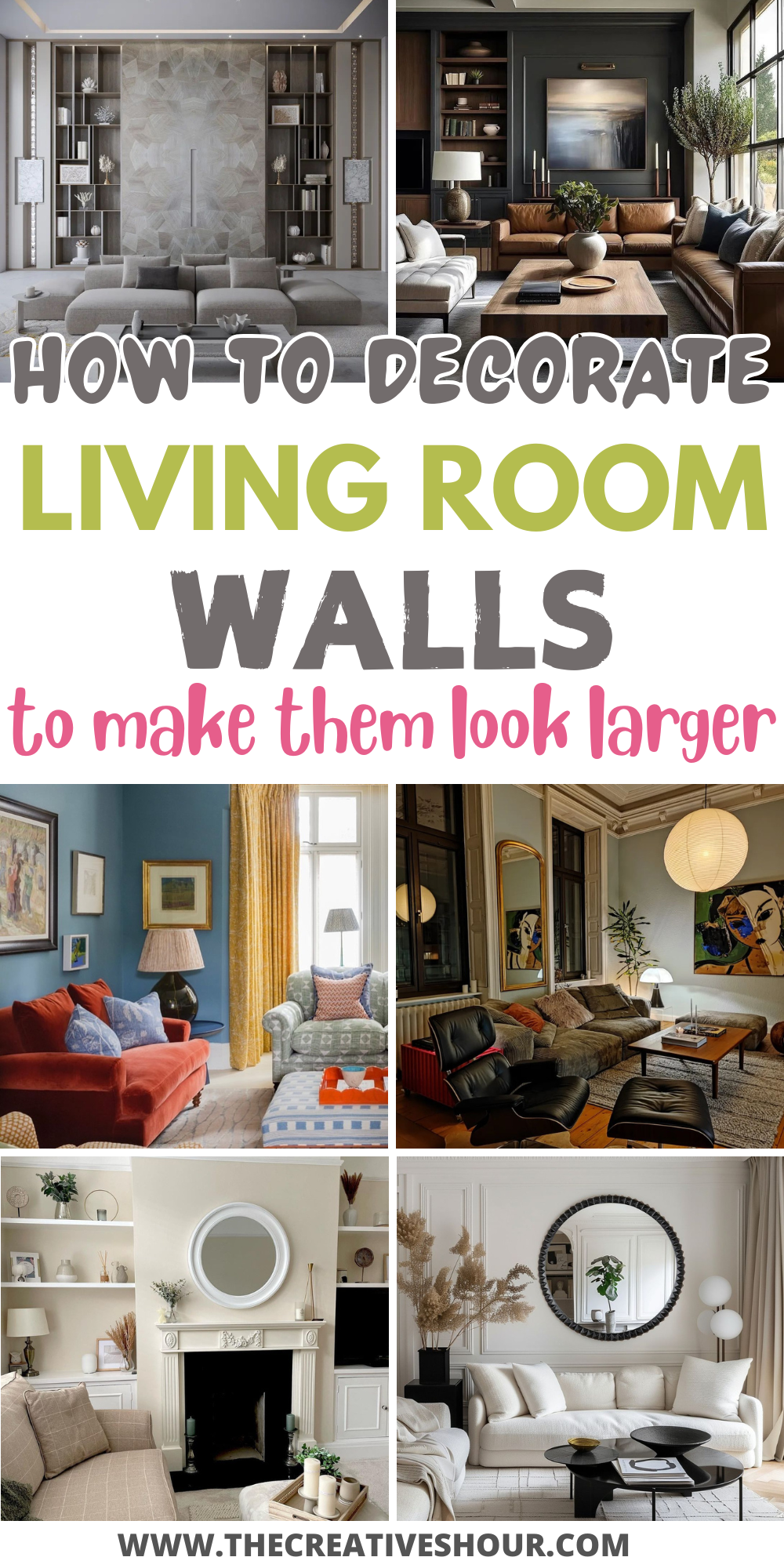
If you love these tips, don’t forget to pin the above image to your “Home and Garden” board.
